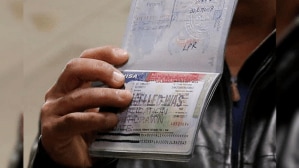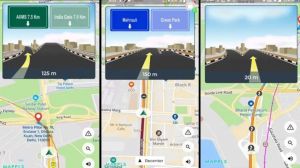New-age technologies such as data analytics are coming of age in sports. Product Labs, part of the International Institute of Information Technology, Hyderabad’s (IIIT-H), has developed and tested a viable market prototype of badminton analytics that was developed at its Centre for Visual Information Technology (CVIT).
A pilot study was conducted in collaboration with Star Sports, which saw the data going live during the telecast of the Premier Badminton League in January 2019, a first move in the world for badminton analytics. Joining the league of cricket in big data consumption and other sports like football, tennis and badminton, CVIT has developed and tested a viable market prototype of badminton analytics. Designed as a catalyst to drive innovation and create commercially viable products, IIIT-H’s Product Labs has been working closely with the research centres located in its campus.
“We picked sports analytics as our first business case. Application of computer vision in sports is an upcoming area. Under professor CV Jawahar, CVIT has already conducted enough research on various sports. We zeroed in on badminton because of an excellent badminton ecosystem in Hyderabad,” Prakash Yalla, head of the Technology Transfer Office and Product Labs, said. When the Product Labs conducted an extensive market study, it found a threefold application of the technology, which includes an aid for coaches in sporting academies, an application in the broadcasting space and for planning and strategising of professional players who would like to profile their opponents, he explained.
While audience engagement has always remained the goal of television broadcasting, the nature and methods used in engagement have undergone an evolution over the years. From action replays, to slow-motion replays, from stump cameras in the case of cricket to technologies like hawk-eye that show how the ball or shuttlecock is moving, the broadcasting space has come of age. “Anything that can help the commentator and in turn catch viewers’ attention is of great interest to broadcasters,” adds Prakash. Hence when Star Sports approached IIIT-H to collaborate on badminton analytics, the institute accepted to perform a pilot study during the Premier Badminton League match.
CVIT first began its foray into sports analytics with cricket. According to Jawahar, “Our initial attempts looked at how large cricket videos can be made searchable. We later expanded our efforts and worked on soccer, moving on to racquet games.” Productisation of badminton analytics was based on a research paper authored by students of CVIT, Anurag Ghosh and Suriya Singh, under Jawahar’s guidance. Titled ‘Towards Structured Analysis of Broadcast Badminton Videos’, the paper proposed a method to analyse a large corpus of badminton broadcast videos by segmenting the points played, tracking and recognising the players in each point and annotating their respective badminton strokes. The algorithms can identify when a rally has started, or ended, and who won the rally for player identification. It provides segmentation of the shots played like backhand, forehand, smash thereby revealing the style of the player. By generating heat maps based on how fast the player moves on court, one can also deduce the dominant player.
However, there were real time challenges as well. In the lab context, the students’ algorithms churned out data on canned video footage which was available for scrutiny an hour or two later. However, this was not practical in real-time high-quality streaming videos. “The other technological challenge was that the broadcaster wanted rally-wise analytics. A rally typically lasts 3-4 seconds, our technology was running sequentially for an hour. So we had to bring an hour-long runtime down to 3-4 seconds” says Prakash. So, the team decided to perform a massive engineering rehaul and came up with a new engineering architecture.
According to Tushar, the Product Labs engineer, optimization of the algorithms efficiently on a CPU was a tough task. “We had to work on a continuously growing live feed that couldn’t be simulated on campus,” he says. The team’s moment of truth arrived during the telecast of the semi-final match of the Premier Badminton League. With the successful display on screens of the distance travelled by the players on court, IIIT-H demonstrated that academic research can be applied in real-life scenarios. On his research paper, Anurag Ghosh, one of the early stakeholders of the project, says, “The novelty of the system is that it absolves the need for complicated multi-camera setups and relies on a single camera feed. The system should enable automatic low cost analysis of players.”
Going forward, Star Sports is now keen on exploring possibilities of expanding the pilot study to a larger scenario. One of them looks beyond badminton to other sports. “Sports start-ups are an unaddressed space in our country. And they would like to kick-start start-ups in the sports space. Our lab has a lot to offer the broadcasting industry from that point of view. In fact, after the success of the pilot, we have had multiple requests from former students who wish to be involved in setting up sports-analytics-based start-ups,” says Prakash.









